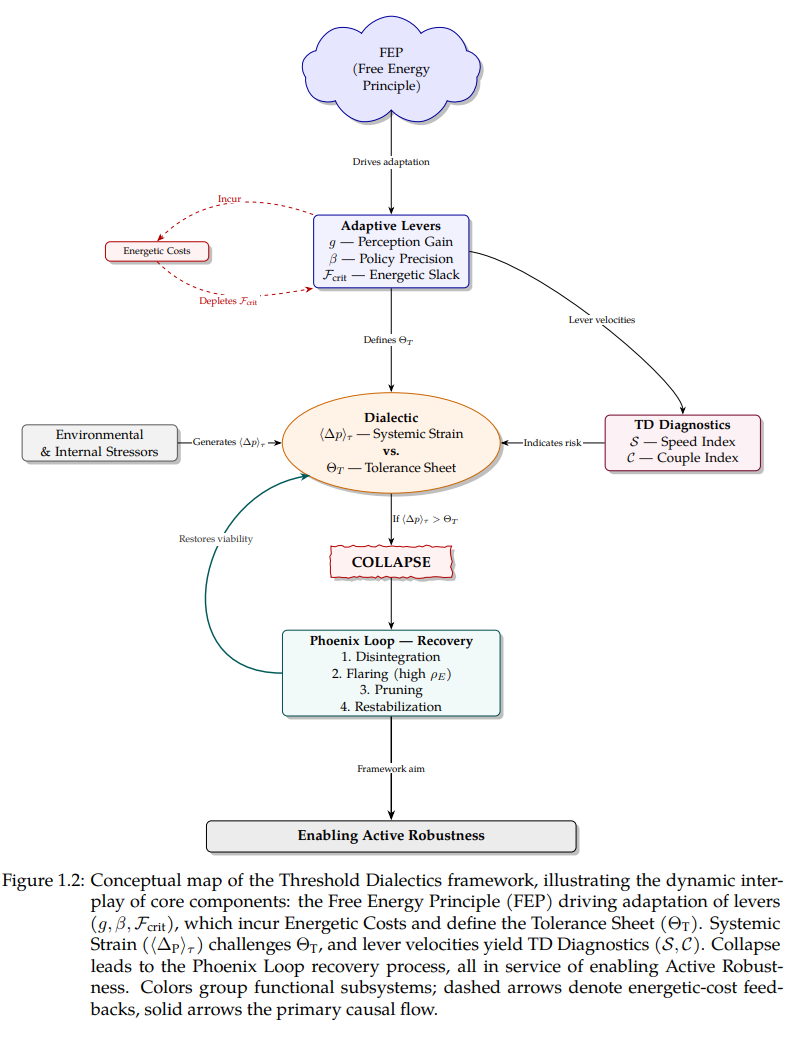Beyond the Brink: Understanding System Collapse
Introducing Threshold Dialectics, a groundbreaking framework by Axel Pond to enable Active Robustness and anticipate systemic failure in complex systems and artificial intelligence.

The Core Question
Why do complex adaptive systems, from financial markets and power grids to ecosystems, organizations, and even our own cognitive and physiological processes, so often unravel abruptly, collapsing seemingly without warning after long periods of apparent stability? This question lies at the heart of some of the most pressing challenges of our time.
Imagine a tightrope walker. Their stability depends not just on isolated factors, but on a continuous, dynamic interplay. Fragility does not arise when one capacity is low, but when their ability to coordinate degrades, and they drift towards their limits at an accelerating, coupled pace.
The Solution: Threshold Dialectics
Argument in one line: Systemic collapse is not primarily a scalar-threshold problem but a coupled-velocity problem: observe how fast rigidity (βLever) and slack (FEcrit) drift together, and you can anticipate failure in time; watch only individual levels, and you will likely act too late.
Threshold Dialectics offers a fundamentally different perspective. It aims not merely to predict collapse, but to enable what we term Active Robustness, a system's capacity to proactively and dynamically maintain its viability in the face of uncertainty and change.
The Three Fundamental Levers:
Perception Gain (gLever)
The system's sensitivity to prediction errors or incoming sensory evidence. Higher gain enhances vigilance but incurs costs.
Policy Precision (βLever)
The sharpness or confidence in selecting actions or beliefs. High precision enables exploitation but can lead to rigidity.
Energetic Slack (FEcrit)
The system's buffer or reserve capacity to absorb shocks or fuel adaptation. Higher slack provides resilience but has costs.
What is Active Robustness?
"Active Robustness," as conceptualized within Threshold Dialectics, represents a dynamic and intelligent form of resilience. It is the capacity of a system to:
- Anticipate threats and opportunities by sensitively perceiving and interpreting signals.
- Adapt its internal structure, policies, and resource allocation (modulate its core levers).
- Learn from experience, refining its adaptive strategies and understanding of its viability boundaries.
- Intervene strategically to mitigate risks, enhance capacity, or guide recovery.
Enabling such Active Robustness is the central pragmatic objective of Threshold Dialectics.
Who Is This Book For?
In complex systems, resilience, control theory, active inference, computational modeling.
In power grids, finance, logistics, AI safety, critical infrastructure design.
(Advanced UG/Grad) in systems science, data science, engineering, with basic coding/math.
Overseeing critical systems, risk management, guiding resilience investments.
Open Science Commitment
In the spirit of fostering collaboration, reproducibility, and collective advancement, all original code used for simulations, data analyses, and generating figures in this book, along with relevant data references, are available in our public repository.
Ready to Dive Deeper?
Explore the theory, mathematics, and simulation behind Threshold Dialectics.
